Few aircraft manufacturers have been as inextricably linked to the history of carrier-based aviation as was Levasseur, focusing on the sole aircraft carrier Béarn, in service from 1927 to 1939. It could be assimilated (loosely) to a "French Grumman" but had largely fallen into oblivion despite some remarkable aircraft using purely marine solutions, such as their trademark boat-like fuselage belly. These were rugged biplane that could act as light bomber, reconnaissance or even two-seat escort fighters. The first first largely adopted was the Levasseur PL.4. 40 were manufactured once it entered service in 1927, just as the Béarn did. Not very fast at 175 km/h (109 mph, 94 kn) over the sea, and a not impressive range of 900 km or 5h autonomy, it was a 3 seater with observer and rear-gunner powered by a Lorraine 12Eb Courlis W-12 Wtcp 450 h engine. They started to be replaced from 1937 by the PL.10.

A PL.4 from 7B1 squadron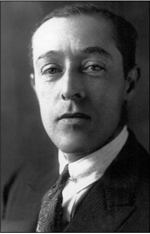 Pierre Levasseur was a French aircraft designer born in 1890 in Paris. He created the "Sociéte Pierre Levasseur Aéronautique" in 1910 initially to make propellers. In 1913, he started building full aircraft, designed by others and then, to design his own in the early interwar, gradually single-engine biplanes for the French Naval Aviation and ran a flying school. Levasseur's chief pilot was François Denhaut (1877–1952), notable for designing the first company's flying boat and his team benefited from the addition of Georges Abrial (1898 – 1970) as aerodynamicist, helping to create the very first company model, the Levasseur-Abrial A-1. For a time prototypes were made with Jean Biche at Constructions Aéronautiques J Levy (Levy-Biche designs).
Pierre Levasseur was a French aircraft designer born in 1890 in Paris. He created the "Sociéte Pierre Levasseur Aéronautique" in 1910 initially to make propellers. In 1913, he started building full aircraft, designed by others and then, to design his own in the early interwar, gradually single-engine biplanes for the French Naval Aviation and ran a flying school. Levasseur's chief pilot was François Denhaut (1877–1952), notable for designing the first company's flying boat and his team benefited from the addition of Georges Abrial (1898 – 1970) as aerodynamicist, helping to create the very first company model, the Levasseur-Abrial A-1. For a time prototypes were made with Jean Biche at Constructions Aéronautiques J Levy (Levy-Biche designs).
The Levasseur Landeroin-Robert Monoplan (1913) was the furthest early model of 3-seat experimental, triple wing monoplane using a rollover frame in its wing support. It was not selected for production. The company produced other models iuntil the end of the war, and in 1922 with its new team, made the experimental Levasseur-Abrial A-1 a high-wing monoplane glider. With Jean Biche were created the Levasseur-Biche LB 2 in 1925 single-seat single bay sesquiplane fighter, which was also declined with floats and actually reached production at Levasseur, with 21 built total, called LB 2 AMBC1. The next model was the Levasseur-Biche LB 4 in 1927, this time a larger sesquiplane observation aircraft that could be used as naval observation models with a single central float and a Gnome-Rhone Jupiter 9Ab engine. Next came in 1928 the Levasseur-Biche LB 6 single-seat sesquiplane fighter, proposed with a Hispano Suiza 12Lb, Gnome Rhone Jupiter 9Ab or Salmson 18 Ab. Bt it was never selected for service and remained a prototype. Levasseur also produced its own designs such as the PL 1 T-O-3 in 1921, a three-seat touring aircraft of wooden construction.
The next Levasseur PL 3 AM3 (1924) was a three seater reconnaissance biplane which this time combined a pilot, observer and MG-gunner for self defence. It First flew in March 1924, featuring for the first time a boat-like under-fuselage section, incluiding under the engine, with compartimentation to float if ditching at sea. This became a feature of later Levasseur naval types, unique at the time for a model with undercarriage.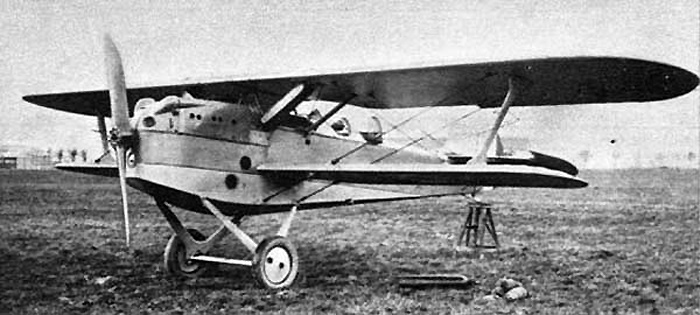
The Levasseur PL.5 "fighter"
Levasseur never gave up on the rather small, but lucrative market of naval fighters, and created the PL 5 C2B as a two-seater biplane naval fighter the same year. Only three were built for evaluation. It was a sesquiplane, wtill with a wooden fuselage and typical signature Levasseur's marine hull design. The bulk of this shape and ruggerized underbelly meant however the model was underpowered. The same year, still in 1926 was thus proposed the revised PL 5 AMBC2 shipboard fighter (aldo design to serve on board Béarn). A single one was built and it was still a two-seat sesquiplane design with an observer. The hull was revised and made more aerondynamic and the fuselage somehwat made lighter to regain performances but this was not enough at first.
The Navy indeed obtained dozens of modifications, until the model gave satisfaction, and was adopted as the Levasseur PL 5, at the end of 1926, with an order for 20 aircraft. Still a naval carrier fighter with two seats, sesquiplane with wooden fuselage, it still had a marine underbelly, and some even had underwingtips floats. To be exact, 25 PL.5 were made including prototypes with the inline 340 kW (450 hp) Hispano-Suiza 12Ha engine (three), V C.2B with a Renault 12Kd engine (1) whereas the 20 production models had a 340 kW (450 hp) Lorraine-Dietrich 12Eb engine. There was even a trainer, called the PL.9 (6 built with a 250 kW (330 hp) Hispano-Suiza 8Se).
It led to the Levasseur PL 7T also presented in December in Paris for the salon but as a civilian "limousine transport" with two seats in open cockpit and six passengers in cabin, having six large windows. This endeavour was abandoned due to lack of commercial interest. The company meanwhile worked in 1927 on a PL 7 with a larger wingspan of 17m 25, still a torpedo bomber proposed and evaluated in early 1928 but not adopted. A model with reduced wingspan was presented then the next year (16m 50) and this one was ordered to 40, further modified from the PL 7 18m wingspan prototype. The copany with this model achieved its goal to provide squadrons for the Beéarn covering all needs. The 1928 Levasseur PL 7 "18m" had a production run of 9 models, all with an inline Hispano-Suiza engine.
![]()
One interesting delivative of the aborted PL.7T was the PL 8 'Oiseau Blanc' in 1927, a long distance aircraft which first flew in April 1927 to attempt the Atlantic crossng before Charles Lindbergh. On 8 May 1927, Charles Nungesser (a famous French WW1 top ace) and François Coli flew 'The White Bird from Le Bourget. But it disappeared before arriving to New-York over the Atlantic, never to be heard of again. This biplane of mixed construction had three large fuel tanks fitted in front of the pilot and was powered by a Lorraine 12 Ebr.
The Levasseur PL 10 (1929) was a successor to the PL.4 as a long range reconnaissance three-seater and recce-bomber of which 30 were ordered for the Béarn, which happened to be the last model developed by the company with such production. The Levasseur PL 11 observation biplane (1931) was about the same but with twin floats, a prototype, not adopted, the PL 12 was a parasol flying boat with a radial engine, the PL 14 (1929) an experimental torpedo-bomber floatplane adapted from the PL 7 and with a mix-wooden and metal construction, fitted with wheels to be amphibious. The Navy was interested, and it was further developed in 1932 as the PL 15 3-seat torpedo-bomber floatplane (first flight October 1932) with 17 ordered for the French Navy.
The Levasseur PL 101 (1933) reconnaissance three-seat biplane/recce-bomber was another an attempt to replace the PL.7, derived from the PL.10, followed by the PL 104 powered with an Hispano-Suiza 12 Xbr engine, PL 105 (1935) with a Hispano-Suiza 9 V engine, PL 106 with an Hispano-Suiza 12 Xbr and PL 15 radiator layout and PL 107 (1937) for the naval command observation role, with an enclosed cockpit and fixed undercarriage (Maiden flight 10 November 1937) with 2 produced and deployed in active units. The PL 108 (Maiden flight 26 September 1939) of all-metal construction was a further improvement followed by the PL 109 (paper project), umtimate attempt to continue providing the Béarn. In all, this was the last and greatesst success of the company, with 30 PL.10 and 30 improved PL.101 ordered.
However Levasseur, crippled by the financial crisis and underfunding, struggled to finance innovation, sticking to old and trusted methods, and the Marine Nationale realized these models, in addition to only be of small series due to industrial limitations at the levasseuer plant, were qualitatively sub-par in their roles. In 1936 for example, the US-built Vought Vindicator had far better performances and appeared much more modern. It was ordered in quanttied as the V.156F in 1939, but delivered late and never used on the Béarn. Apart the PL.101, Levasseur made a few experiments such as the 1932 PL 151 floatplane based on the PL 15, displayed at the Paris Air Salon in December; the PL 154 (1934) torpedo bomber also based on the PL 15 and modified as a landplane.
Then was the 1935 PL 200 floatplane, built with floats blended into the tail section, PL 201 (1935) observation 2-seater variant of the PL 200 (maiden flight October 1935), PL 300 (1935) 2 seater torpedo bomber with enclosed cockpit and folding wings featuring a Hispano-Suiza 12 Ybrg, and proposed as a 3-seater in the reconnaissance role; the PL 301 single engine torpedo bomber floatplane paper project (enclosed cockpit but exposed rear-gunner position) with the same Hispano-Suiza 12 Ybrg. The PL 400 (1939) was another observation 2-seater but parasol which first flew on 19 December 1939 powered by a 220 hp Potez engine and only had its maiden fligh on 19December, to be tested until May 27th, 1940. Its speed could be as low as 60 and up to 202 km/h, remaining stable. The sold prototype was destroyed on the ground in 3 June by the Luftwaffe.
The ultimate PL 401 which first flew on 19 December 1939 was similar in layout to the German Fieseler Storch, displaying the same STOL caracteristics and fitted with a Renault 6Q-09 engine, this time for the Army. It came too late and was not even evaluated. Only the first was 80% completed. If the nationalizations 1936 did not affected Levasseur firm, the war forced it to slow down, drained of manpower and resources. Charles Fréchet, which for the PL.2 concluded an agreement with Blackburn, replaced Pierre Levasseur (who died in 1941) as head of the company and essentially produced aircraft for other manufacturers postwar, overhauled aircraft equipment, and until 1963 when the company was liquidated, the company only manufactured non-aeronautical equipment.
The aircraft carrier Béarn, commissioned in 1927 (colorized by Irootoko Jr)
Its a paradow that a nation as strong as it was in the field of aeronautics, France, was initially slow to jump on the naval aviation bandwagon. There were many good reasons, starting with priorities. In 1912 the Navy was willing to experiment the conversion of the old torpedo mothership cruiser "Foudre" ("Lightning") into a seaplane carrier in 1912 to already test how aviation can screen the fleet and perform reconnaissance for combined exercises. But the pioneering step was ignored later when WWI broke out, and if the Marine Nationale used many seaplanes in various roles, the use of seaplane carriers was very limited, unlike Britain which had for the time, the largest fleet of aircraft-carrying ships in service, dozens of seaplane carriers and several aircraft carriers such as the Argus, Furious, Vindictive or Campania. There was the ever-present lack of resources and priority given to land-based models, and limited naval operations that could be performed in the Mediterranean with local shore-based seaplane or land-based units at all times.
However by signing the Washington Treaty in 1922, France was forced to scrap its brand new battleship then seeing their construction suspended since 1914, the four Normandie class dreadnoughts. Of these, only Béarn was the most advanced. Faced with the prospect of completing these at great cost or modernize its existing fleet of dreadnoughts to fit within the new tonnage limits for capital ships, Frane chose the latter. But rather to scrap a still valuable hull almost complete, it was decided to follow a general move done by major powers of Britain, Japan and the US, of converting unused hulls into aircraft carriers, by then not capped by the treaty as these ships were classed as "auxiliaries" under 10,000 tonnes, and still capped above to some extent. The naval staff decided in late 1922 to convert the Béarn.
Between the design phase and reconstruction, which took years, the Béarn was completed in 1927 as a carrier, the same year as the US Lexington class and a later than the Japanese Kaga and Akagi or British Eagle. Decisions were made over the machinery that were poor however, in light of the future fast battleship development, which condemned the Béarn so sail at best to 21.5 knots, just enough for the old battlefleet of Courbet and Bretagne class dreadnoughts, but not with the next generation of the Dunkerque class from 1935, which would have required 30 knots. Unable to follow the fleet, this crippled the operational use of the Béarn in the late 1930s. Also in the interwar, the French stuck on the idea of a seaplane carrier, and ordered probably one of the largest and most modern of the times, the Commandant Teste. The latter was not faster at 21 knots.
However, there were plans to improve this state of affairs, despite the effects of the 1929 financial crisis. This led to the concept of the Joffre class purpose-built fleet carriers in 1936. At least they were true fleet carriers capable of 33.5 knots (62.0 km/h; 38.6 mph) and able to carry 40 aircraft unlike the Béarn and its 32 aircraft and oddly placed elevators. However, delays meant both were only the first was started in November 1938, and by the time the war started in September 1939, she was nowhere near close to launch. The only an interesting "what if". Back to the Béarn, and the idea was from the start in 1927 to have three squadrons of 10 aircraft on average, one of reconnaissance models, one of fighters, and one of torpedo-bombers. This led Levasseur to compete to provide all three types and ultimately succeeding.
Levasseur indeed provided on average enough planes to equip two to four squadrons for successively the PL.4 observation model, PL.5 "observation-fighter" PL.7 torpedo bomber and PL.10/101 to replace the PL.4. They all presented advantages for use on a carrier. First off, they were of rugged construction, enabling both hard landings, and splashing at sea while keeping their fuselage intact, thus staying afloat long enough for a rescue. The latter made sense indeed, as it was a rarely attempted caracteristic, only exploited by the then "carrier aviation specialist" that was Blackburn in Britain. The company indeed was the first to propose the admiralty models that were buoyant enough to stay afloat. That caracteristic, known and reported by Charles Fréchet to Pierre Levasseur, was seen as a winning asset to gain the support of the Marine Nationale. It is important to underline how tough and long was the training of naval pilots at the time. It was a very selected club of very skilled and talented professionnal seen as an elite compared to land-based pilots, rightly so, given their dual nature of "sailors" as well.
In case of a ditching at sea, a common occurence in the 1920s when engines were still notoriously unreliable, especially when exposed to the punishing sea conditions, notably corrosive sea spray. And there were on top the usual periles proper to the sea, navigation errors and running out of gas, or missing the deck and splashing close to the carrier. In all these cases, having an aircraft strong enough to remain in one piece (apart the wings, and undercarriage that can be jettisoned before crash-splashing), ensured it would remain afloat, partly due to its construction, with a boat-like underbelly, compartimentation, and wooden construction which all participated in that buoyancy, but also the added features of a marine plane such as extra floating bags that cold be deployed ender the wings and fuselage to increase that buoyancy and survival kits proper to rescue dinghies, and always comprising rations, a fishing kit and a flare pistol. Provided weather was clement enough for long enough in order for the rescue to arrive, the Marine Nationale with the Levasseurs could recuperate both the pilots and their aircraft.
This trait was kept for all the models that were deployed on the Béarn. However this survivability at a cost, and it was performance obviously. Being heavier, rugged models, the Levasseurs were limited in their performances by their modest engines, wether being Hispano-Suiza or Lorraine. With 300+ hp performances were honorable and certainly suited the observation and torpedo-bomber models, but the PL.5 fighter was the only "ugly duckling" of the family. The 1924 production model was powered by a Renault 12Kd V-12 water-cooled piston engine which developed an honorable 360 kW (480 hp) which was impressive in 1924 and would have been stellar on a regular land-based fighter, but far less in 1927 when the model entered service. Its top speed was indeed ony of 200 km/h (120 mph, 110 knots), and ceiling reduced to 6000 m for a range of just 800 km. It would have been completely dominated by any other land-based fighter of that time and age. Wisely, the Marine Nationale looked ate alternative proposals for a fighter, and the PL.5 was rebranded as a reconnaissance model capable of escorting other Levasseurs such as the PL.4 and PL.7 with its two forward firing 7.7 mm Vickers MGs and still a defensive pair of Lewis.
In the fighter role, however, the Marine Nationale struggled to equip the Béarn, which was limited to a modest squadron of eight fighters. This made for a limited order prospect for any other company, unless converting an existing fighter. One was the parasol Wibault 74 (1929) only tested, and 18 Wib.74 made, as well as the Dewoitine D.1 (FF 1922), which D.27 based D.53 were only briefly tested in deck trials. In the end, the only "permanent" navalized fighter that was regularly used in squadron, at least until 1939, was the Dewoitine D.373. Long derived from the D37 all the way back to 1931, to replace the Levasseur PL.5 and Wibault 74, a total of 20 D373 were built for the Aeronautique Navale with a landing hook and some marine equipments, but is took nearly an hour to unfold its wings and the engine proved unreliable. Only tests were performed in 1938 and both squadrons were transferred on shore. Still, the D.373 and improved 376 (25 delivered) of 1939 were capable of c400 km/h at 5000m.
Fortunately, Béarn trusted the Levasseurs in the torpedo/reconnaissance role, until the Vought V-156 attempted to replace the PL.7, but it had at least an excellent model, a new breed that will prove deadly in WW2: The drive bomber, in the shape of the LN 401. This, at least, was the only success of the Béarn's air wing, albeit like the rest, these squadrons ended in the land battle and Béarn was sent in the French Carribean almost for the remainder of the war, emptied of its air wing.
A standoff ensued between the Ministère de la Marine (Ministry of the Navy) and Chamber of Deputies over the new type. In the meantime, the manufacturer designated it the PL.4 and it was certainly smaller than the PL.2. Although their wingspan was similar, they were folding and the fuselage was shorter of about a third, which had an immediate impact. It was no longer able to carry a light torpedo, or at least on manufactured in France, albeit the US model matched, but acquiring it would have required an official order financed by the parliament, and thus, revealing the true nature of the R3b prototype. The French Navy thus ordered forty of this new PL.4 officially for reconnaissance and artiller spotting only, albeit the torpedo capability was kept for better days. Meanwhile, the Béarn still lacked a torpedo bomber.
The PL.4 was powered by a 450-horsepower Lorraine 12Eb Courlis twelve-cylinder in W. This sturdy and reliable engine drove a wooden two-bladed, single pitch propeller. It was then one of the most popular French engines at the time, also powering the Breguet Br 19 bomber and Japanese Hiro H1H.
The fuselage contained three open cockpits. One for the pilot, and two fore the machine gunner and observer, the latter having aradio set to give artillery corrections on the fly. The PL.4 only had a defensive armament, a single 7.7-millimeter Lewis machine gun on a flexible mount, scarf ring on the moddle position. The navigator was last, behind a windshield, to have hos field of view cleared from the lower wing.
Bomb launchers were available, and can be fixed close to the lower wing's roots, and the two racks car carry a maximum of 150 kilograms, generally small 75 kgs bombs.
In practice, pilots liked the PL.4, it proved easy to fly with predictible behaviour and was highly forgiving of pilot errors, both during takeoff and landings from the aircraft carrier. The greate ratio between teh fuselage ad wings compared to the PL.2 made it able to slow down quite a bit more when trying to land, before stalling, making these safer. In fact, only one was lost during missions over the Mediterranean by January 1929. The three crew members were declared missing a few weeks later. Their aicraft probably ditched at sea as intended, enabling them to survive for long, but they were never found. The investigation had no remains found ever, and so pointed out to a weather problem.
In the summer of 1931, the PL.4 started to be replaced by the Levasseur PL.7, within Squadron 7B1 and PL.10 within Squadron 7S1. PL.4s were however still operated for five years as carrier-landing training aircraft, within the SEB squadron, a specialized training unit assigned to the Béarn but permanently based at nearby Palyvestre airfield, in Toulon. They were scrapped before 1939.
The first ship-borne reconnaissance aircraft in service with the French Navy was not a game changer, but it solidified trust in the company and laid the groundwork for future aircraft. No PL.4 survived, albeit the Air and Space Museum at Le Bourget now houses the original landing gear, of a famous model derived from the PL.4, the PL.8 "Oiseau Blanc" which attempted long-distance raids and disappered in the Atlantic crossing by Nungesser and Coli.

A PL.4 from 7B1 squadron
Development of Carrier Aviation in France
About Levasseur
 Pierre Levasseur was a French aircraft designer born in 1890 in Paris. He created the "Sociéte Pierre Levasseur Aéronautique" in 1910 initially to make propellers. In 1913, he started building full aircraft, designed by others and then, to design his own in the early interwar, gradually single-engine biplanes for the French Naval Aviation and ran a flying school. Levasseur's chief pilot was François Denhaut (1877–1952), notable for designing the first company's flying boat and his team benefited from the addition of Georges Abrial (1898 – 1970) as aerodynamicist, helping to create the very first company model, the Levasseur-Abrial A-1. For a time prototypes were made with Jean Biche at Constructions Aéronautiques J Levy (Levy-Biche designs).
Pierre Levasseur was a French aircraft designer born in 1890 in Paris. He created the "Sociéte Pierre Levasseur Aéronautique" in 1910 initially to make propellers. In 1913, he started building full aircraft, designed by others and then, to design his own in the early interwar, gradually single-engine biplanes for the French Naval Aviation and ran a flying school. Levasseur's chief pilot was François Denhaut (1877–1952), notable for designing the first company's flying boat and his team benefited from the addition of Georges Abrial (1898 – 1970) as aerodynamicist, helping to create the very first company model, the Levasseur-Abrial A-1. For a time prototypes were made with Jean Biche at Constructions Aéronautiques J Levy (Levy-Biche designs).
The Levasseur Landeroin-Robert Monoplan (1913) was the furthest early model of 3-seat experimental, triple wing monoplane using a rollover frame in its wing support. It was not selected for production. The company produced other models iuntil the end of the war, and in 1922 with its new team, made the experimental Levasseur-Abrial A-1 a high-wing monoplane glider. With Jean Biche were created the Levasseur-Biche LB 2 in 1925 single-seat single bay sesquiplane fighter, which was also declined with floats and actually reached production at Levasseur, with 21 built total, called LB 2 AMBC1. The next model was the Levasseur-Biche LB 4 in 1927, this time a larger sesquiplane observation aircraft that could be used as naval observation models with a single central float and a Gnome-Rhone Jupiter 9Ab engine. Next came in 1928 the Levasseur-Biche LB 6 single-seat sesquiplane fighter, proposed with a Hispano Suiza 12Lb, Gnome Rhone Jupiter 9Ab or Salmson 18 Ab. Bt it was never selected for service and remained a prototype. Levasseur also produced its own designs such as the PL 1 T-O-3 in 1921, a three-seat touring aircraft of wooden construction.
The PL.2 and 3: Contracts for the Navy
The company started its history with the Navy already with the Levasseur-Biche, and in parallel proposed its own design, the PL 2 AT 1. This was a rugged single-seat biplane of a wooden construction with the "T" signifying it was a torpedo bomber, to awnser an Air ministry specification for such a land-based model. The PL.2 AT 1 remaining at prototype stage but was well evaluated. From there, was produced the improved PL 2 AT 2 single seat variant. Albeit underpowered, it still had the problem of having no observer over seas. The model was rather intended for coastal operations, with the land always in sight. The PL 2 of 1923 tried to correct this by being a 2-seat model. It was evaluated and ordered to nine units for the French Navy. It was the first true company success with the Marine Nationale.The next Levasseur PL 3 AM3 (1924) was a three seater reconnaissance biplane which this time combined a pilot, observer and MG-gunner for self defence. It First flew in March 1924, featuring for the first time a boat-like under-fuselage section, incluiding under the engine, with compartimentation to float if ditching at sea. This became a feature of later Levasseur naval types, unique at the time for a model with undercarriage.
The PL.4
The next Levasseur PL 4 A3 R3b (1926) is the subject of the current article. This was a 3-seat shipborne reconnaissance aircraft this time intended for the then completing aircraft carrier Béarn and answerng a specific request from the Air Ministry. One prototype was completed for evaluation, still with a wooden fuselage. The "production" Levasseur PL 4 appeared later in 1926 after scores of modifications, still a three-seat carrier reconnaissance model which at last gained approval with an order for 40, the first carrier-borne dedicated model for the Aéronautique Navale Française. Stil a biplane with a wooden fuselage and marine underbelly for giving the crew ample time to float before rescue after ditching.The PL.5 naval fighter

The Levasseur PL.5 "fighter"
Levasseur never gave up on the rather small, but lucrative market of naval fighters, and created the PL 5 C2B as a two-seater biplane naval fighter the same year. Only three were built for evaluation. It was a sesquiplane, wtill with a wooden fuselage and typical signature Levasseur's marine hull design. The bulk of this shape and ruggerized underbelly meant however the model was underpowered. The same year, still in 1926 was thus proposed the revised PL 5 AMBC2 shipboard fighter (aldo design to serve on board Béarn). A single one was built and it was still a two-seat sesquiplane design with an observer. The hull was revised and made more aerondynamic and the fuselage somehwat made lighter to regain performances but this was not enough at first.
The Navy indeed obtained dozens of modifications, until the model gave satisfaction, and was adopted as the Levasseur PL 5, at the end of 1926, with an order for 20 aircraft. Still a naval carrier fighter with two seats, sesquiplane with wooden fuselage, it still had a marine underbelly, and some even had underwingtips floats. To be exact, 25 PL.5 were made including prototypes with the inline 340 kW (450 hp) Hispano-Suiza 12Ha engine (three), V C.2B with a Renault 12Kd engine (1) whereas the 20 production models had a 340 kW (450 hp) Lorraine-Dietrich 12Eb engine. There was even a trainer, called the PL.9 (6 built with a 250 kW (330 hp) Hispano-Suiza 8Se).
The PL.7 Torpedo Bomber
Still willing to fill the needs of the French Naval Aviation and in particular of the aircraft carrier Béarn, Levasseur tried to procure a torpeod boomber to rojnd the procurement after a fighter and reconnaissance model. The intermediary was an attempt to modernize the PL.4 with the Levasseur PL 6 (1926) 2 seat fighter-reconnaissane biplane presented at the Paris Salon in December. It had lesser performances than the PL.5 fighter and was more design as an in-between the PL.5 and PL.4. It was not adopted, but the same year still, the PL 7 was presented as a successor to the PL 2 of 1923. It was still a three-seat shipboard sesquiplane with wooden fuselage and marine underbelly, not adopted, but further developed as the PL.14.It led to the Levasseur PL 7T also presented in December in Paris for the salon but as a civilian "limousine transport" with two seats in open cockpit and six passengers in cabin, having six large windows. This endeavour was abandoned due to lack of commercial interest. The company meanwhile worked in 1927 on a PL 7 with a larger wingspan of 17m 25, still a torpedo bomber proposed and evaluated in early 1928 but not adopted. A model with reduced wingspan was presented then the next year (16m 50) and this one was ordered to 40, further modified from the PL 7 18m wingspan prototype. The copany with this model achieved its goal to provide squadrons for the Beéarn covering all needs. The 1928 Levasseur PL 7 "18m" had a production run of 9 models, all with an inline Hispano-Suiza engine.
One interesting delivative of the aborted PL.7T was the PL 8 'Oiseau Blanc' in 1927, a long distance aircraft which first flew in April 1927 to attempt the Atlantic crossng before Charles Lindbergh. On 8 May 1927, Charles Nungesser (a famous French WW1 top ace) and François Coli flew 'The White Bird from Le Bourget. But it disappeared before arriving to New-York over the Atlantic, never to be heard of again. This biplane of mixed construction had three large fuel tanks fitted in front of the pilot and was powered by a Lorraine 12 Ebr.
Later Levasseur models
The company then surfed on the mediatic appeal of the "white bird" to renew interest from the civilan market. The attempt was the Levasseur PL 8 of 1928, a mail transport biplane with three crew, which had its maiden flight 18 September 1928 and was powered by a Hispano-Suiza 12 Mbr. Nothing came of it. Next, the PL 9 was a two seat training biplane for the Navy, which due to all its similarities with other models was purchased by the French Navy to be used on the Béarn, and 6 were made.The Levasseur PL 10 (1929) was a successor to the PL.4 as a long range reconnaissance three-seater and recce-bomber of which 30 were ordered for the Béarn, which happened to be the last model developed by the company with such production. The Levasseur PL 11 observation biplane (1931) was about the same but with twin floats, a prototype, not adopted, the PL 12 was a parasol flying boat with a radial engine, the PL 14 (1929) an experimental torpedo-bomber floatplane adapted from the PL 7 and with a mix-wooden and metal construction, fitted with wheels to be amphibious. The Navy was interested, and it was further developed in 1932 as the PL 15 3-seat torpedo-bomber floatplane (first flight October 1932) with 17 ordered for the French Navy.
The Levasseur PL 101 (1933) reconnaissance three-seat biplane/recce-bomber was another an attempt to replace the PL.7, derived from the PL.10, followed by the PL 104 powered with an Hispano-Suiza 12 Xbr engine, PL 105 (1935) with a Hispano-Suiza 9 V engine, PL 106 with an Hispano-Suiza 12 Xbr and PL 15 radiator layout and PL 107 (1937) for the naval command observation role, with an enclosed cockpit and fixed undercarriage (Maiden flight 10 November 1937) with 2 produced and deployed in active units. The PL 108 (Maiden flight 26 September 1939) of all-metal construction was a further improvement followed by the PL 109 (paper project), umtimate attempt to continue providing the Béarn. In all, this was the last and greatesst success of the company, with 30 PL.10 and 30 improved PL.101 ordered.
However Levasseur, crippled by the financial crisis and underfunding, struggled to finance innovation, sticking to old and trusted methods, and the Marine Nationale realized these models, in addition to only be of small series due to industrial limitations at the levasseuer plant, were qualitatively sub-par in their roles. In 1936 for example, the US-built Vought Vindicator had far better performances and appeared much more modern. It was ordered in quanttied as the V.156F in 1939, but delivered late and never used on the Béarn. Apart the PL.101, Levasseur made a few experiments such as the 1932 PL 151 floatplane based on the PL 15, displayed at the Paris Air Salon in December; the PL 154 (1934) torpedo bomber also based on the PL 15 and modified as a landplane.
Then was the 1935 PL 200 floatplane, built with floats blended into the tail section, PL 201 (1935) observation 2-seater variant of the PL 200 (maiden flight October 1935), PL 300 (1935) 2 seater torpedo bomber with enclosed cockpit and folding wings featuring a Hispano-Suiza 12 Ybrg, and proposed as a 3-seater in the reconnaissance role; the PL 301 single engine torpedo bomber floatplane paper project (enclosed cockpit but exposed rear-gunner position) with the same Hispano-Suiza 12 Ybrg. The PL 400 (1939) was another observation 2-seater but parasol which first flew on 19 December 1939 powered by a 220 hp Potez engine and only had its maiden fligh on 19December, to be tested until May 27th, 1940. Its speed could be as low as 60 and up to 202 km/h, remaining stable. The sold prototype was destroyed on the ground in 3 June by the Luftwaffe.
The ultimate PL 401 which first flew on 19 December 1939 was similar in layout to the German Fieseler Storch, displaying the same STOL caracteristics and fitted with a Renault 6Q-09 engine, this time for the Army. It came too late and was not even evaluated. Only the first was 80% completed. If the nationalizations 1936 did not affected Levasseur firm, the war forced it to slow down, drained of manpower and resources. Charles Fréchet, which for the PL.2 concluded an agreement with Blackburn, replaced Pierre Levasseur (who died in 1941) as head of the company and essentially produced aircraft for other manufacturers postwar, overhauled aircraft equipment, and until 1963 when the company was liquidated, the company only manufactured non-aeronautical equipment.
Born for the Béarn

The aircraft carrier Béarn, commissioned in 1927 (colorized by Irootoko Jr)
Its a paradow that a nation as strong as it was in the field of aeronautics, France, was initially slow to jump on the naval aviation bandwagon. There were many good reasons, starting with priorities. In 1912 the Navy was willing to experiment the conversion of the old torpedo mothership cruiser "Foudre" ("Lightning") into a seaplane carrier in 1912 to already test how aviation can screen the fleet and perform reconnaissance for combined exercises. But the pioneering step was ignored later when WWI broke out, and if the Marine Nationale used many seaplanes in various roles, the use of seaplane carriers was very limited, unlike Britain which had for the time, the largest fleet of aircraft-carrying ships in service, dozens of seaplane carriers and several aircraft carriers such as the Argus, Furious, Vindictive or Campania. There was the ever-present lack of resources and priority given to land-based models, and limited naval operations that could be performed in the Mediterranean with local shore-based seaplane or land-based units at all times.
However by signing the Washington Treaty in 1922, France was forced to scrap its brand new battleship then seeing their construction suspended since 1914, the four Normandie class dreadnoughts. Of these, only Béarn was the most advanced. Faced with the prospect of completing these at great cost or modernize its existing fleet of dreadnoughts to fit within the new tonnage limits for capital ships, Frane chose the latter. But rather to scrap a still valuable hull almost complete, it was decided to follow a general move done by major powers of Britain, Japan and the US, of converting unused hulls into aircraft carriers, by then not capped by the treaty as these ships were classed as "auxiliaries" under 10,000 tonnes, and still capped above to some extent. The naval staff decided in late 1922 to convert the Béarn.
Between the design phase and reconstruction, which took years, the Béarn was completed in 1927 as a carrier, the same year as the US Lexington class and a later than the Japanese Kaga and Akagi or British Eagle. Decisions were made over the machinery that were poor however, in light of the future fast battleship development, which condemned the Béarn so sail at best to 21.5 knots, just enough for the old battlefleet of Courbet and Bretagne class dreadnoughts, but not with the next generation of the Dunkerque class from 1935, which would have required 30 knots. Unable to follow the fleet, this crippled the operational use of the Béarn in the late 1930s. Also in the interwar, the French stuck on the idea of a seaplane carrier, and ordered probably one of the largest and most modern of the times, the Commandant Teste. The latter was not faster at 21 knots.
However, there were plans to improve this state of affairs, despite the effects of the 1929 financial crisis. This led to the concept of the Joffre class purpose-built fleet carriers in 1936. At least they were true fleet carriers capable of 33.5 knots (62.0 km/h; 38.6 mph) and able to carry 40 aircraft unlike the Béarn and its 32 aircraft and oddly placed elevators. However, delays meant both were only the first was started in November 1938, and by the time the war started in September 1939, she was nowhere near close to launch. The only an interesting "what if". Back to the Béarn, and the idea was from the start in 1927 to have three squadrons of 10 aircraft on average, one of reconnaissance models, one of fighters, and one of torpedo-bombers. This led Levasseur to compete to provide all three types and ultimately succeeding.
Levasseur indeed provided on average enough planes to equip two to four squadrons for successively the PL.4 observation model, PL.5 "observation-fighter" PL.7 torpedo bomber and PL.10/101 to replace the PL.4. They all presented advantages for use on a carrier. First off, they were of rugged construction, enabling both hard landings, and splashing at sea while keeping their fuselage intact, thus staying afloat long enough for a rescue. The latter made sense indeed, as it was a rarely attempted caracteristic, only exploited by the then "carrier aviation specialist" that was Blackburn in Britain. The company indeed was the first to propose the admiralty models that were buoyant enough to stay afloat. That caracteristic, known and reported by Charles Fréchet to Pierre Levasseur, was seen as a winning asset to gain the support of the Marine Nationale. It is important to underline how tough and long was the training of naval pilots at the time. It was a very selected club of very skilled and talented professionnal seen as an elite compared to land-based pilots, rightly so, given their dual nature of "sailors" as well.
In case of a ditching at sea, a common occurence in the 1920s when engines were still notoriously unreliable, especially when exposed to the punishing sea conditions, notably corrosive sea spray. And there were on top the usual periles proper to the sea, navigation errors and running out of gas, or missing the deck and splashing close to the carrier. In all these cases, having an aircraft strong enough to remain in one piece (apart the wings, and undercarriage that can be jettisoned before crash-splashing), ensured it would remain afloat, partly due to its construction, with a boat-like underbelly, compartimentation, and wooden construction which all participated in that buoyancy, but also the added features of a marine plane such as extra floating bags that cold be deployed ender the wings and fuselage to increase that buoyancy and survival kits proper to rescue dinghies, and always comprising rations, a fishing kit and a flare pistol. Provided weather was clement enough for long enough in order for the rescue to arrive, the Marine Nationale with the Levasseurs could recuperate both the pilots and their aircraft.
This trait was kept for all the models that were deployed on the Béarn. However this survivability at a cost, and it was performance obviously. Being heavier, rugged models, the Levasseurs were limited in their performances by their modest engines, wether being Hispano-Suiza or Lorraine. With 300+ hp performances were honorable and certainly suited the observation and torpedo-bomber models, but the PL.5 fighter was the only "ugly duckling" of the family. The 1924 production model was powered by a Renault 12Kd V-12 water-cooled piston engine which developed an honorable 360 kW (480 hp) which was impressive in 1924 and would have been stellar on a regular land-based fighter, but far less in 1927 when the model entered service. Its top speed was indeed ony of 200 km/h (120 mph, 110 knots), and ceiling reduced to 6000 m for a range of just 800 km. It would have been completely dominated by any other land-based fighter of that time and age. Wisely, the Marine Nationale looked ate alternative proposals for a fighter, and the PL.5 was rebranded as a reconnaissance model capable of escorting other Levasseurs such as the PL.4 and PL.7 with its two forward firing 7.7 mm Vickers MGs and still a defensive pair of Lewis.
In the fighter role, however, the Marine Nationale struggled to equip the Béarn, which was limited to a modest squadron of eight fighters. This made for a limited order prospect for any other company, unless converting an existing fighter. One was the parasol Wibault 74 (1929) only tested, and 18 Wib.74 made, as well as the Dewoitine D.1 (FF 1922), which D.27 based D.53 were only briefly tested in deck trials. In the end, the only "permanent" navalized fighter that was regularly used in squadron, at least until 1939, was the Dewoitine D.373. Long derived from the D37 all the way back to 1931, to replace the Levasseur PL.5 and Wibault 74, a total of 20 D373 were built for the Aeronautique Navale with a landing hook and some marine equipments, but is took nearly an hour to unfold its wings and the engine proved unreliable. Only tests were performed in 1938 and both squadrons were transferred on shore. Still, the D.373 and improved 376 (25 delivered) of 1939 were capable of c400 km/h at 5000m.
Fortunately, Béarn trusted the Levasseurs in the torpedo/reconnaissance role, until the Vought V-156 attempted to replace the PL.7, but it had at least an excellent model, a new breed that will prove deadly in WW2: The drive bomber, in the shape of the LN 401. This, at least, was the only success of the Béarn's air wing, albeit like the rest, these squadrons ended in the land battle and Béarn was sent in the French Carribean almost for the remainder of the war, emptied of its air wing.
Towards the PL.4
It was in the summer of 1926 that the French Navy asked Levasseur to develop a carrier-based torpedo bomber, based on the earlier, small serie PL.2. They wanted a less imposing aircraft, even if that was to carry a smaller torpedo, and the model also took some DNA from the PL.5 fighter. Although technically very successful and rather pleasant to fly, the PL.2 was indeed particularly imposing considering the size of the hangars on the Béarn. Less could be carried in operations. The first drafts resulted in a new model at first known as the R3b in French military nomenclature. It was a three-seater reconnaissance and bombing aircraft, but not too small to carry a torpedo. However the Air Ministry did not wanted deputies and senators refusing to allocate funds for yet another torpedo bomber so soon after the PL.2. Meanwhile alterations were made, and the first production protype flew on December 8, 1926.A standoff ensued between the Ministère de la Marine (Ministry of the Navy) and Chamber of Deputies over the new type. In the meantime, the manufacturer designated it the PL.4 and it was certainly smaller than the PL.2. Although their wingspan was similar, they were folding and the fuselage was shorter of about a third, which had an immediate impact. It was no longer able to carry a light torpedo, or at least on manufactured in France, albeit the US model matched, but acquiring it would have required an official order financed by the parliament, and thus, revealing the true nature of the R3b prototype. The French Navy thus ordered forty of this new PL.4 officially for reconnaissance and artiller spotting only, albeit the torpedo capability was kept for better days. Meanwhile, the Béarn still lacked a torpedo bomber.
Design of the PL.4
Externally, the Levasseur PL.4 was a biplane constructed in wood, covered in fabric for the wings, plywood for the fuselage, and featuring a negative dihedral wing. In addition to its conventional landing gear that can be jettisoned for ditching at sea, and it had a landing hook with an ingenious balancing arm. The boat-like underbelly was even refined compared to the PL.2.The PL.4 was powered by a 450-horsepower Lorraine 12Eb Courlis twelve-cylinder in W. This sturdy and reliable engine drove a wooden two-bladed, single pitch propeller. It was then one of the most popular French engines at the time, also powering the Breguet Br 19 bomber and Japanese Hiro H1H.
The fuselage contained three open cockpits. One for the pilot, and two fore the machine gunner and observer, the latter having aradio set to give artillery corrections on the fly. The PL.4 only had a defensive armament, a single 7.7-millimeter Lewis machine gun on a flexible mount, scarf ring on the moddle position. The navigator was last, behind a windshield, to have hos field of view cleared from the lower wing.
Bomb launchers were available, and can be fixed close to the lower wing's roots, and the two racks car carry a maximum of 150 kilograms, generally small 75 kgs bombs.
⚙ PL.4 specifications | |
| Empty Weight | 1,650 kg (3,638 lb) |
| Gross Weight | 2,639 kg (5,818 lb) |
| Lenght | 9.7 m (31 ft 10 in) |
| Width wings folded | 5.67 m (18 ft 7 in) |
| Wingspan | 14.60 m (47 ft 11 in) |
| Height | 3.85 m |
| Wing Area | 61.00 m2 (650 sq ft) |
| Wing Loading | 43 kg/m2 (8.8 lb/sq ft) |
| Engine | Lorraine 12Eb Courlis W-12 Wtcp 450 hp (340 kW) |
| Power/mass | 0.1337 kW/kg (0.0813 hp/lb) |
| Propeller | 2-bladed fixed-pitch propeller |
| Top Speed sea level | 175 km/h (109 mph, 94 kn) |
| Top Speed 3000m (9,800 ft) | 170 km/h (110 mph; 92 kn) |
| Cruise Speed | |
| Range | 900 Km (560 mi, 490 nmi) at top speed, 5 hours |
| Climb rate | 3,000 m (9,800 ft) in 20 minutes |
| Ceiling | 5000 m (16,000 ft) |
| Armament | 7.7mm defensive Lewis LMG scarff ring |
| Crew | 3: Pilot, Observer/navigator, MG-gunner |
Operational History
The first PL.4s were accepted into service by the spring of 1927 but it had to wait 11 months after its first flight until November 14, 1927, to officially become a carrier-based reconnaissance aircraft, commissioned as such and qualified, with a first landing on the Béarn. The first twenty joined Squadron 7S1, as purely reconnaissance models, but the last twenty joined Squadron 7B1, light reconnaissance bombers, meawing they had racks installed by default. In practice, however, they seems never to carry bombs in operation.In practice, pilots liked the PL.4, it proved easy to fly with predictible behaviour and was highly forgiving of pilot errors, both during takeoff and landings from the aircraft carrier. The greate ratio between teh fuselage ad wings compared to the PL.2 made it able to slow down quite a bit more when trying to land, before stalling, making these safer. In fact, only one was lost during missions over the Mediterranean by January 1929. The three crew members were declared missing a few weeks later. Their aicraft probably ditched at sea as intended, enabling them to survive for long, but they were never found. The investigation had no remains found ever, and so pointed out to a weather problem.
In the summer of 1931, the PL.4 started to be replaced by the Levasseur PL.7, within Squadron 7B1 and PL.10 within Squadron 7S1. PL.4s were however still operated for five years as carrier-landing training aircraft, within the SEB squadron, a specialized training unit assigned to the Béarn but permanently based at nearby Palyvestre airfield, in Toulon. They were scrapped before 1939.
The first ship-borne reconnaissance aircraft in service with the French Navy was not a game changer, but it solidified trust in the company and laid the groundwork for future aircraft. No PL.4 survived, albeit the Air and Space Museum at Le Bourget now houses the original landing gear, of a famous model derived from the PL.4, the PL.8 "Oiseau Blanc" which attempted long-distance raids and disappered in the Atlantic crossing by Nungesser and Coli.
Gallery

Squadron 7B1 N°38, 1930. the only torpedo-bomber unit, later replaced by the PL.7
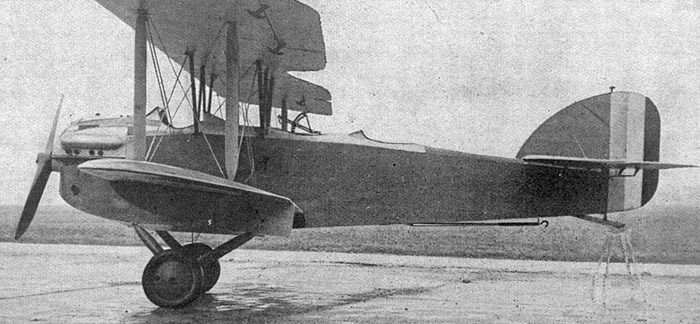
PL.4 L'Aéronautique, December 1926
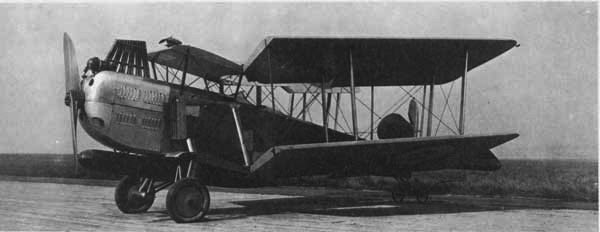
Levasseur PL.2T
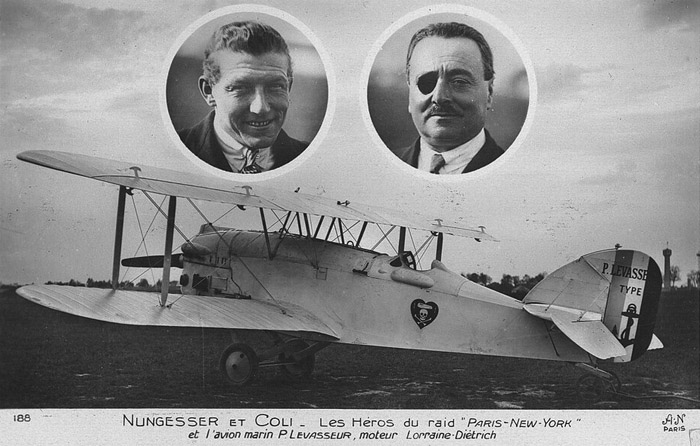
Oiseau Blanc, a modified PL.4

1932, PL.4s taking off from the Bearn
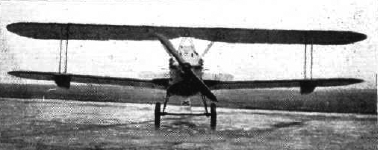
Levasseur PL.4 front, note the small underwing floats.
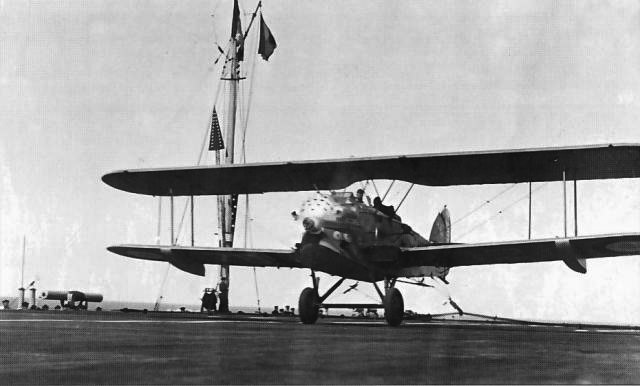
Levasseur PL.4 landing on the Béarn

A PL.4 from 7B1 squadron


The successor, PL.10

Levasseur PL.14 seaplane

Levasseur PL.8 "Oiseau Blanc"
Last four: From Pinterest. Others, creative commons.
Read More
Books
Air International Volume 27, Issue 2, 1984Les Avions de Pierre Levasseur - Histoire de l'Aviation Lo 16 (Ledet/Morareau) Lela Presse, 2004
Jane's all the World's Aircraft 1928. London: Sampson Low, Marston & company, ltd.
Taylor, Michael J. H. (1989). Jane's Encyclopedia of Aviation. London: Studio Editions.
"The Paris Aero Show 1926". Flight: 781. 2 December 1926.
Links
Parmentier, Bruno (6 December 2001). "Levasseur PL.4 A3 R3b". Aviafrance"Levasseur PL.4". Military Equipment Guide With Photos.
tvd.im/aviation/
fandavion.free.fr
armedconflicts.com
aviafrance.com/
secretprojects.co.uk
militaryfactory.com
aviadejavu.ru/
federation=archive.wikiwix.com
destinationsjourney.com
avionslegendaires.net
en.wikipedia.org
navypedia.org Bearn
ww2artgallery.e-monsite.com/
Model Kits
None found.Video
None.- Lohner E (1913)
- Macchi M3 (1916)
- Macchi M5 (1918)
- Ansaldo ISVA (1918)
- Sopwith Baby (1916)
- Short 184 (1916)
- Fairey Campania (1917)
- Sopwith Cuckoo (1917)
- Felixstowe F.2 (1917)
- Friedrichshafen FF 33 (1916)
- Albatros W4 (1916)
- Albatros W8 (1918)
- Hanriot HD.2
- Grigorovitch M5
- IJN Farman MF.7
- IJN Yokosho Type Mo
- Yokosho Rogou Kougata (1917)
- Yokosuka Igo-Ko (1920)
- Curtiss N9 (1916)
- Aeromarine 39
- Vought VE-7
- Douglas DT (1921)
- Boeing FB.5 (1923)
- Boeing F4B (1928)
- Vought O2U/O3U Corsair (1928)
- Supermarine Seagull (1922)
- Blackburn Ripon (1926)
- Fairey IIIF (1927)
- Fairey Seal (1930)
- LGL-32 C.1 (1927)
- Caspar U1 (1921)
- Dornier Do J Wal (1922)
- Rohrbach R-III (1924)
- Mitsubishi 1MF (1923)
- Mitsubishi B1M (1923)
- Yokosuka E1Y (1923)
- Nakajima A1N (1927)
- Nakajima E2N (1927)
- Mitsubishi B2M (1927)
- Nakajima A4N (1929)
- CANT 18
WW1
✠ K.u.K. Seefliegerkorps:
 Italian Naval Aviation
Italian Naval Aviation
 RNAS
RNAS
 Marineflieger
Marineflieger
 French Naval Aviation
French Naval Aviation
 Russian Naval Aviation
Russian Naval Aviation
 IJN Air Service
IJN Air Service
 USA
USA
Interwar
 Interwar US
Interwar US
 Interwar Britain
Interwar Britain
 Interwar France
Interwar France
 Interwar Germany
Interwar Germany
 Interwar Japan
Interwar Japan
 Interwar Italy
Interwar Italy
- Curtiss SOC seagull (1934)
- Grumman FF (1931)
- Curtiss F11C Goshawk (1932)
- Grumman F2F (1933)
- Grumman F3F (1935)
- Northrop BT-1 (1935)
- Grumman J2F Duck (1936)
- Consolidated PBY Catalina (1935)
- Brewster/NAF SBN-1 (1936)
- Curtiss SBC Helldiver (1936)
- Vought SB2U Vindicator (1936)
- Brewster F2A Buffalo (1937)
- Douglas TBD Devastator (1937)
- Vought Kingfisher (1938)
- Curtiss SO3C Seamew (1939)
- Douglas SBD Dauntless (1939)
- Grumman F4F Wildcat (1940)
- F4U Corsair (NE) (1940)
- Brewster SB2A Buccaneer (1941)
- Grumman TBF/TBM Avenger (1941)
- Consolidated TBY Sea Wolf (1941)
- Grumman F6F Hellcat (1942)
- Curtiss SB2C Helldiver (1942)
- Curtiss SC Seahawk (1944)
- Grumman F8F Bearcat (1944)
- Ryan FR-1 Fireball (1944)
- Douglas AD-1 Skyraider (1945)
Fleet Air Arm
- Fairey Swordfish (1934)
- Blackburn Shark (1934)
- Supermarine Walrus (1936)
- Fairey Seafox (1936)
- Blackburn Skua (1937)
- Short Sunderland (1937)
- Blackburn Roc (1938)
- Fairey Albacore (1940)
- Fairey Fulmar (1940)
- Grumman Martlet (1941)
- Hawker sea Hurricane (1941)
- Brewster Bermuda (1942)
- Fairey Barracuda (1943)
- Fairey Firefly (1943)
- Grumman Tarpon (1943)
- Grumman Gannet (1943)
- Supermarine seafire (1943)
- Blackburn Firebrand (1944)
- Hawker Sea Fury (1944)
IJN aviation
- Aichi D1A "Susie" (1934)
- Mitsubishi A5M "Claude" (1935)
- Nakajima A4N (1935)
- Yokosuka B4Y "Jean" (1935)
- Mitsubishi G3M "Nell" (1935)
- Nakajima E8N "Dave" (1935)
- Kawanishi E7K "Alf" (1935)
- Nakajima B5N "Kate" (1937)
- Kawanishi H6K "Mavis" (1938)
- Aichi D3A "Val" (1940)
- Mitsubishi A6M "zeke" (1940)
- Nakajima E14Y "Glen" (1941)
- Nakajima B6N "Jill" (1941)
- Mitsubishi F1M "pete" (1941)
- Aichi E13A Reisu "Jake" (1941)
- Kawanishi E15K Shiun "Norm" (1941)
- Nakajima C6N Saiun "Myrt" (1942)
- Yokosuka D4Y "Judy" (1942)
- Kyushu Q1W Tokai "Lorna" (1944)
Luftwaffe
- Arado 196 (1937)
- Me109 T (1938)
- Blohm & Voss 138 Seedrache (1940)
Italian Aviation
- Savoia-Marchetti S.55
- IMAM Ro.43/44
- CANT Z.501 Gabbiano
- CANT Z.506 Airone
- CANT Z.508
- CANT Z.511
French Aeronavale
- GL.300 (1926-39)
- Levasseur PL.5 (1927)
- Potez 452 (1935)
- Loire 210 (1936)
- Loire 130 (1937)
- LN 401 (1938)
Soviet Naval Aviation
- Shavrov SH-2 (1928)
- Tupolev TB-1P (1931)
- Beriev MBR-2 (1930)
- Tupolev MR-6 (1933)
- Tupolev MTB-1 (1934)
- Beriev Be-2 (1936)
- Polikarpov I16 naval (1936)
- Tupolev MTB-2 (1937)
- Ilyushine DB-3T/TP (1937)
- Beriev Be-4 (1940)
-
Skoda Š-328V
R-XIII Idro
Fokker C.XI W (1934)
WW2
- De Havilland Sea Vixen
- Hawker Sea Hawk
- Supermarine Scimitar
- Blackburn Buccaneer
- Hawker Sea Harrier
- Douglas A4 Skyhawk
- Grumman F9F Panther
- Vought F8 Crusader
- McDonnell-Douglas F-4 Phantom-II
- North Am. A5 Vigilante
- TU-142
- Yak 38 forger
☢ Cold War
✧ NATO
 Fleet Air Arm
Fleet Air Arm
 US Navy
US Navy
☭ Warsaw Pact
Merch
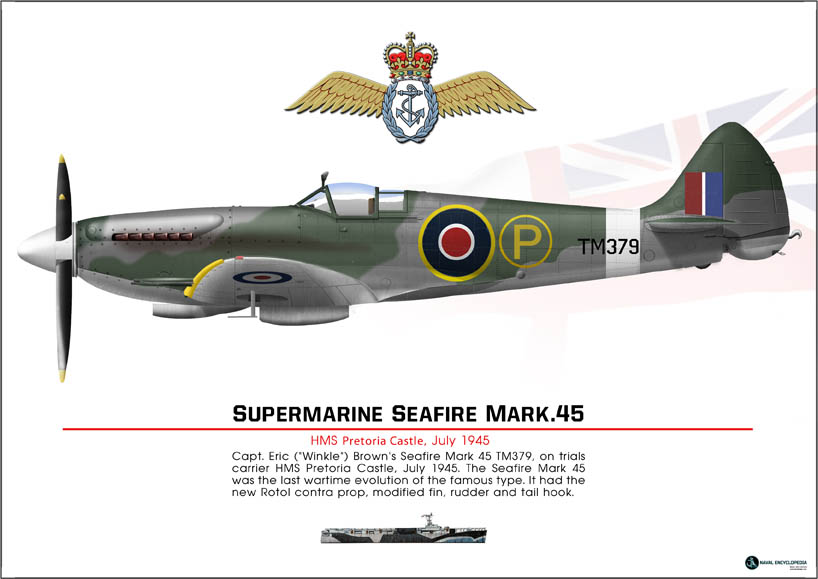
Seafire Mark 45; HMS Pretoria Castle
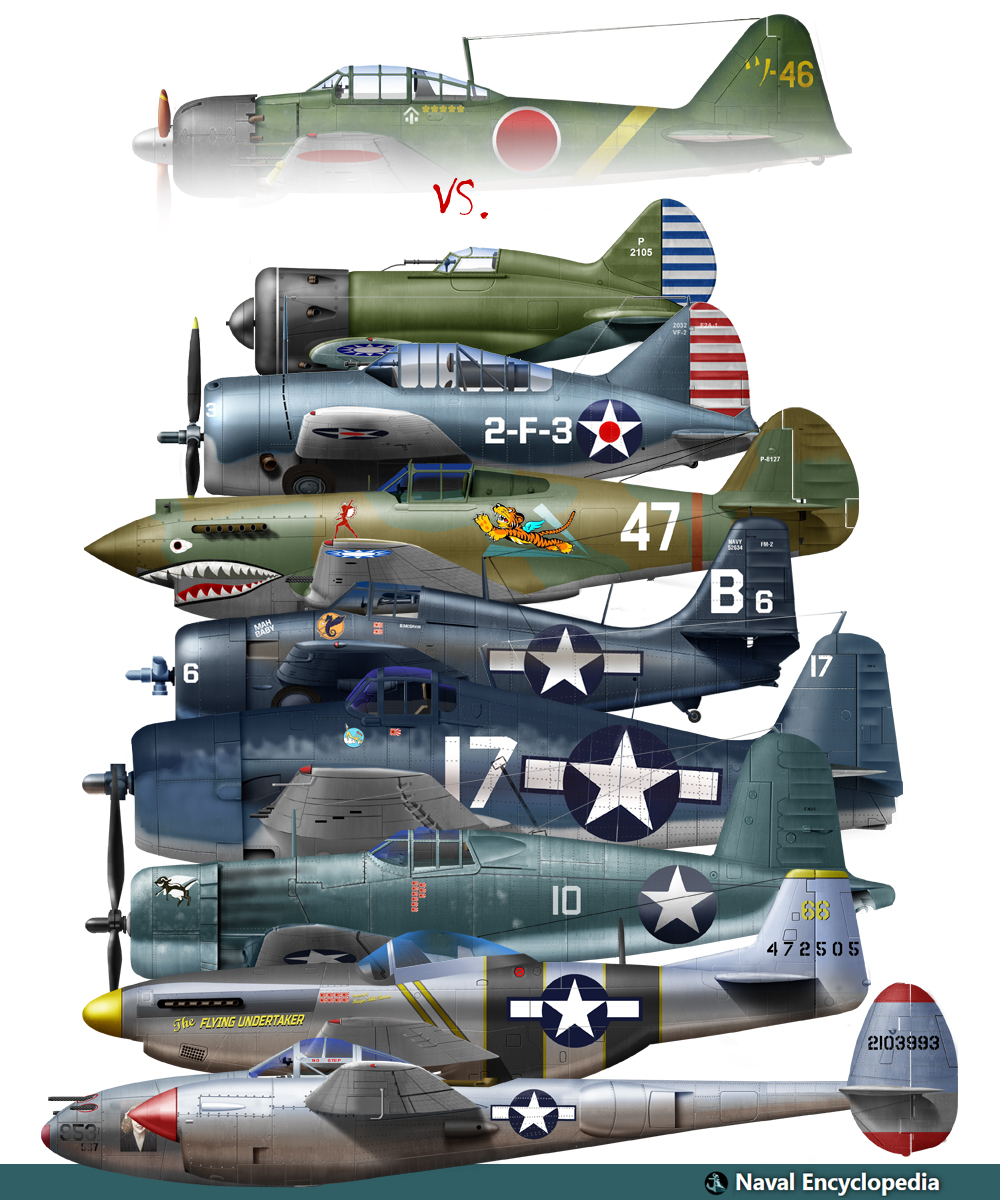
Zeros vs its aversaries
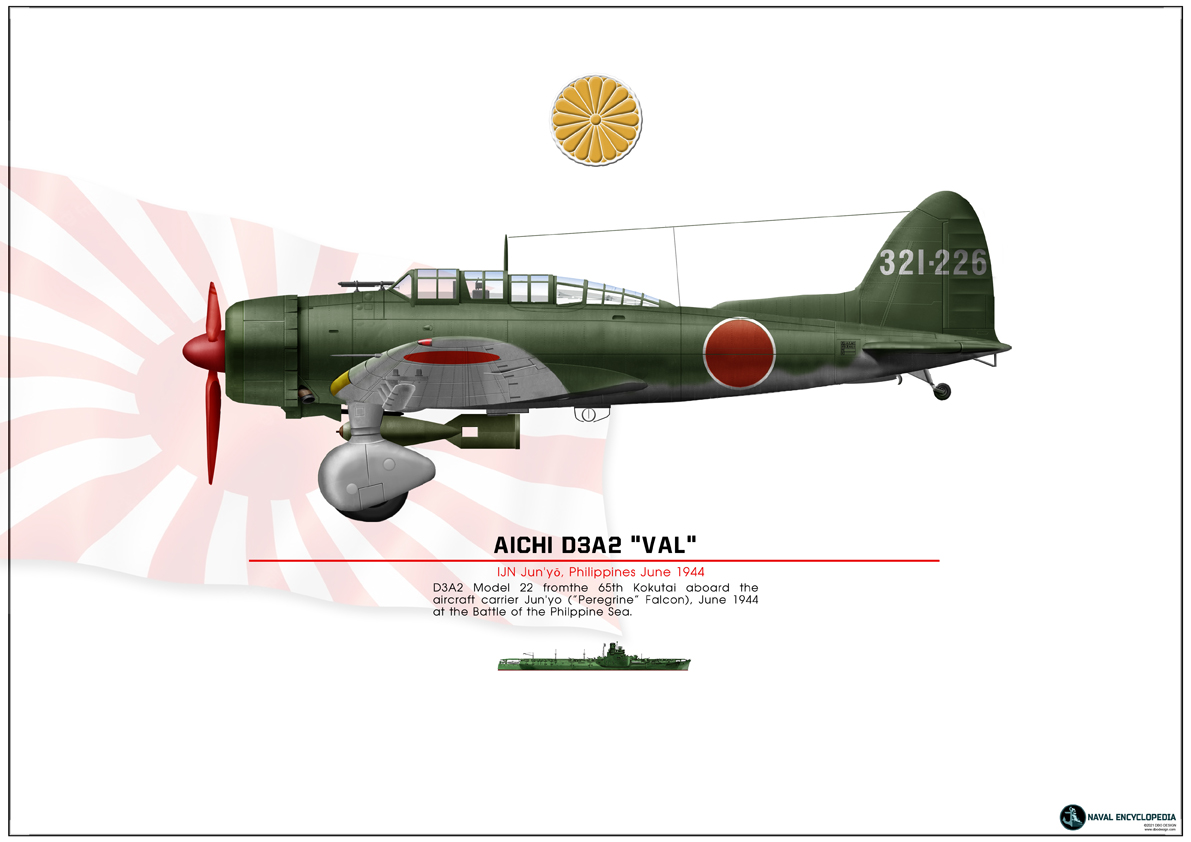
Aichi D3A “Val” Junyo
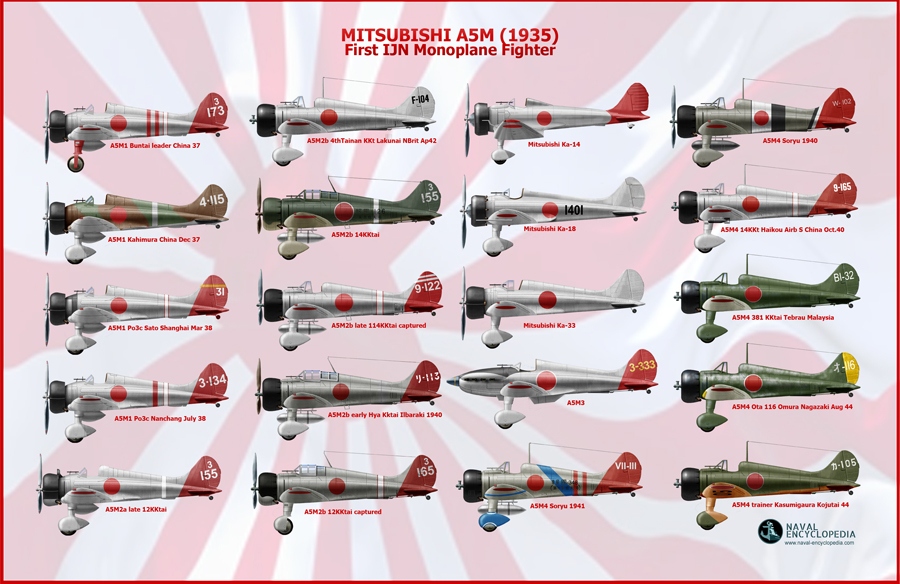
Mitsubishi A5M poster
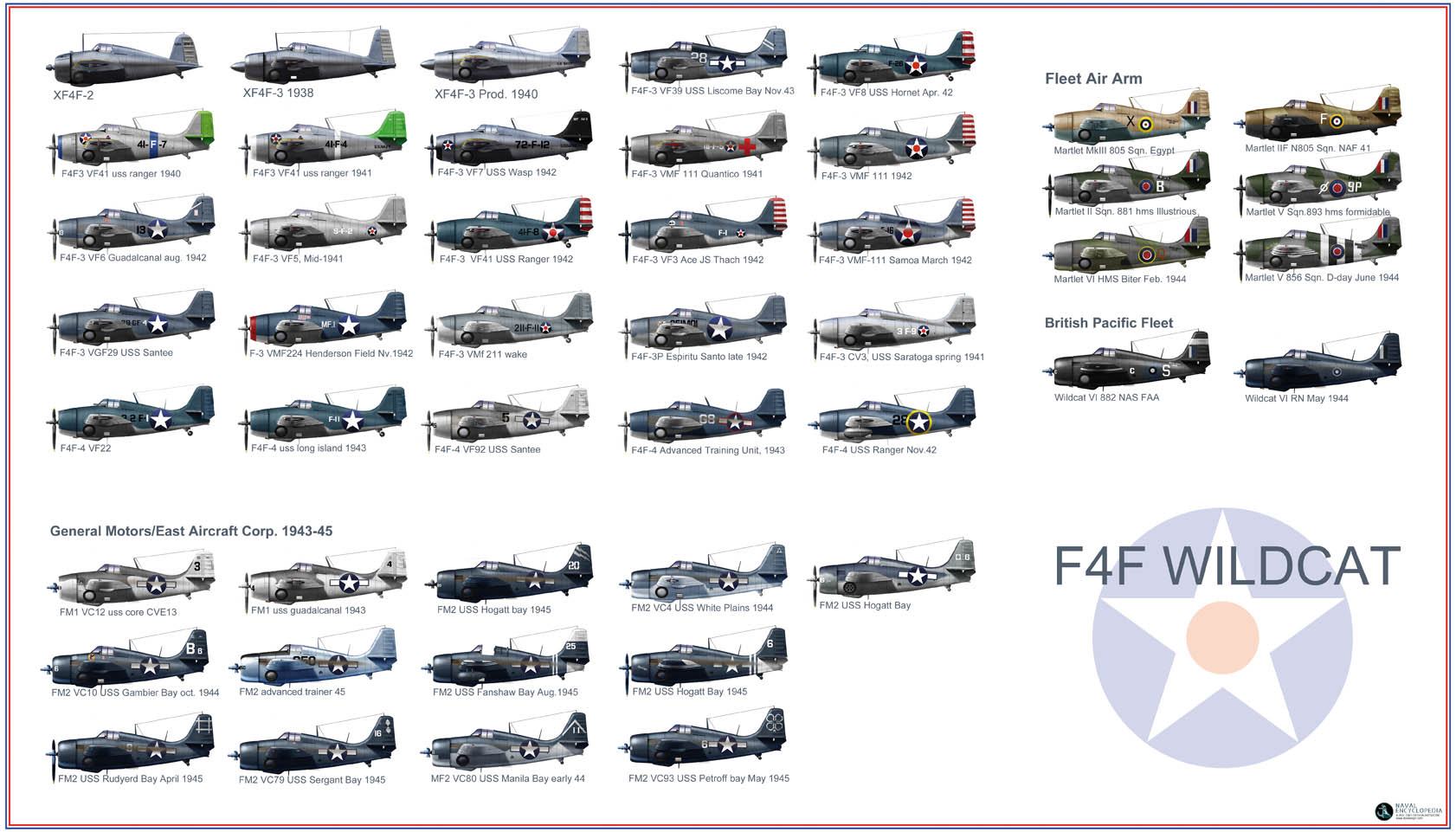
F4F wildcat
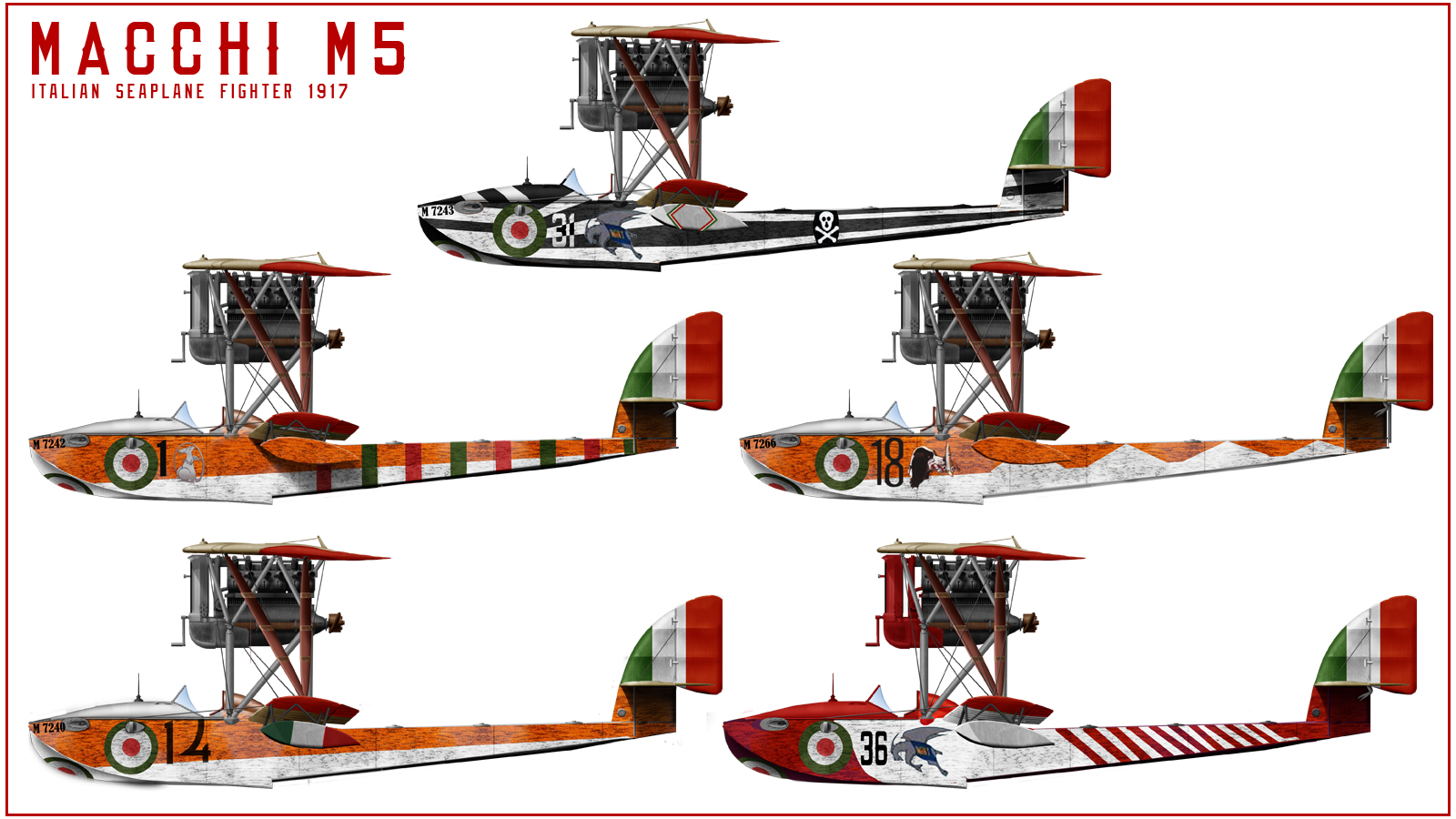
Macchi M5
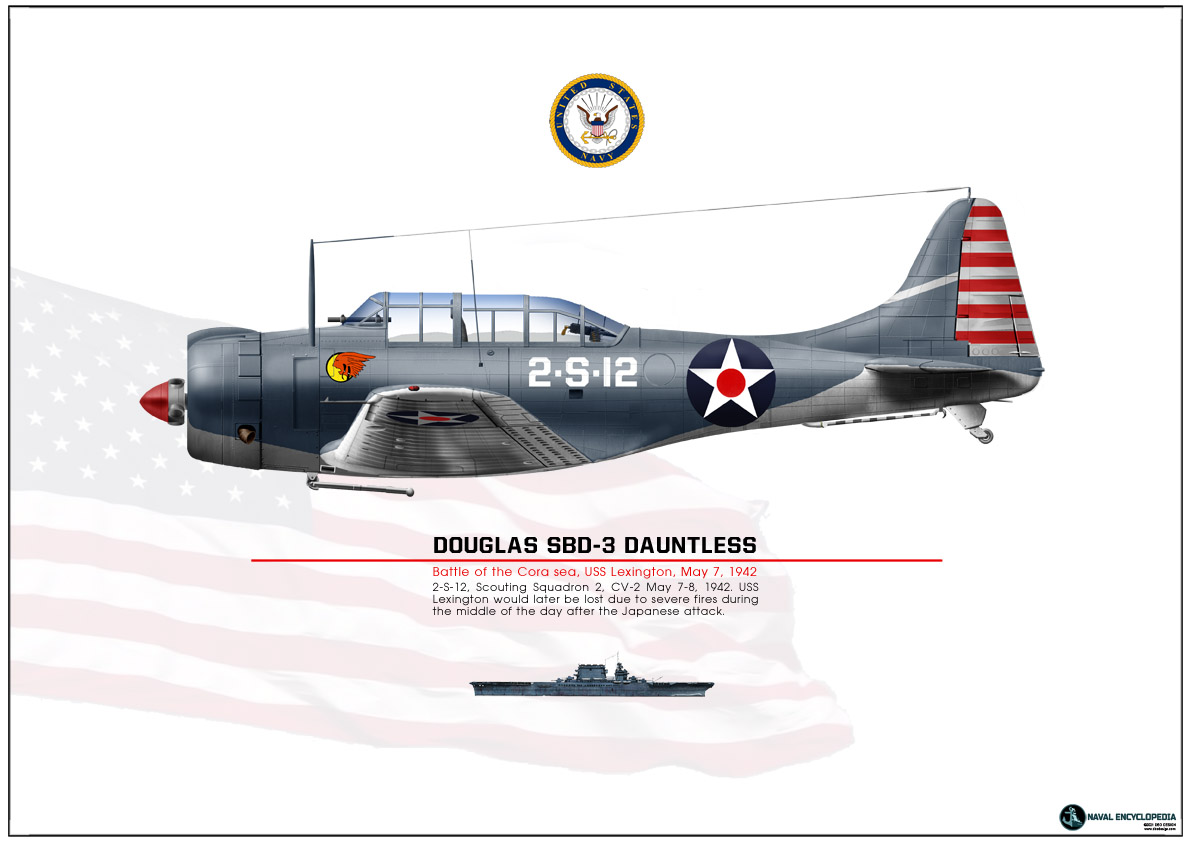
SBD Dauntless Coral Sea
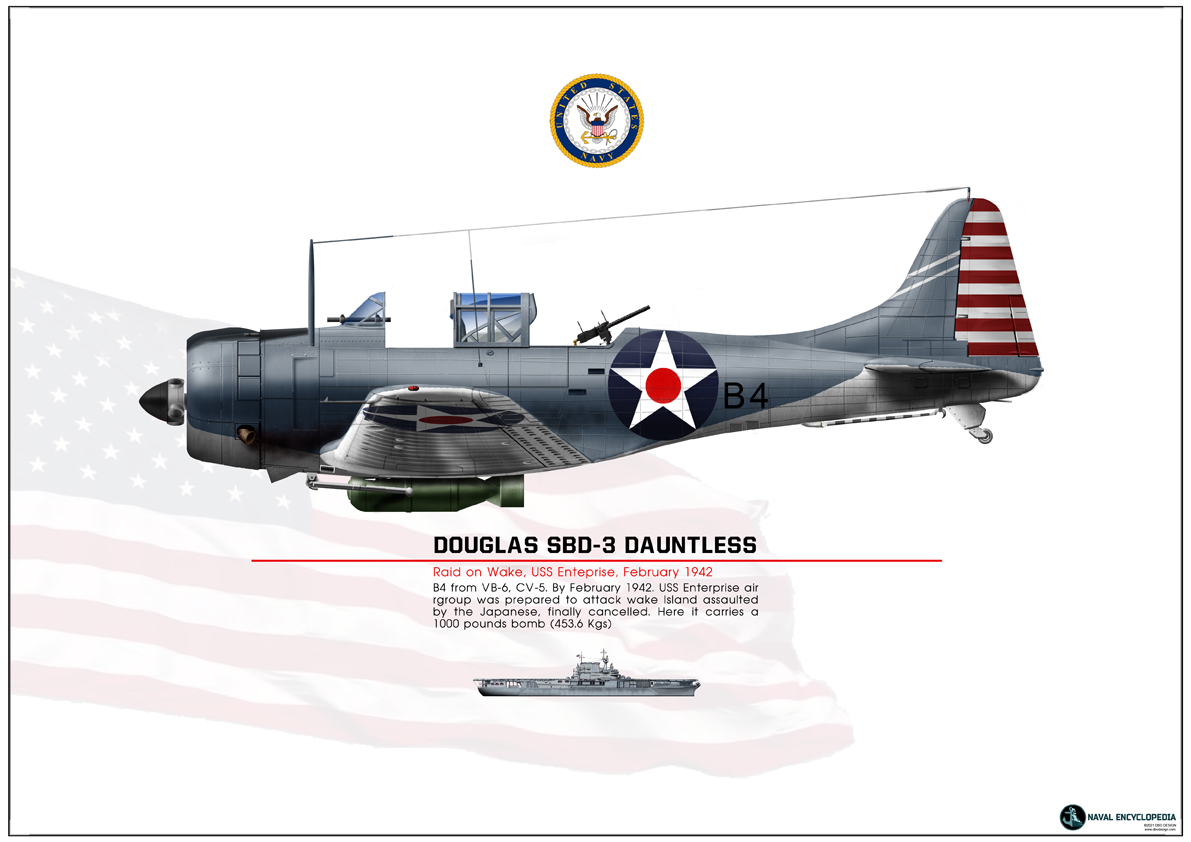
SBD Dauntless USS Enterprise
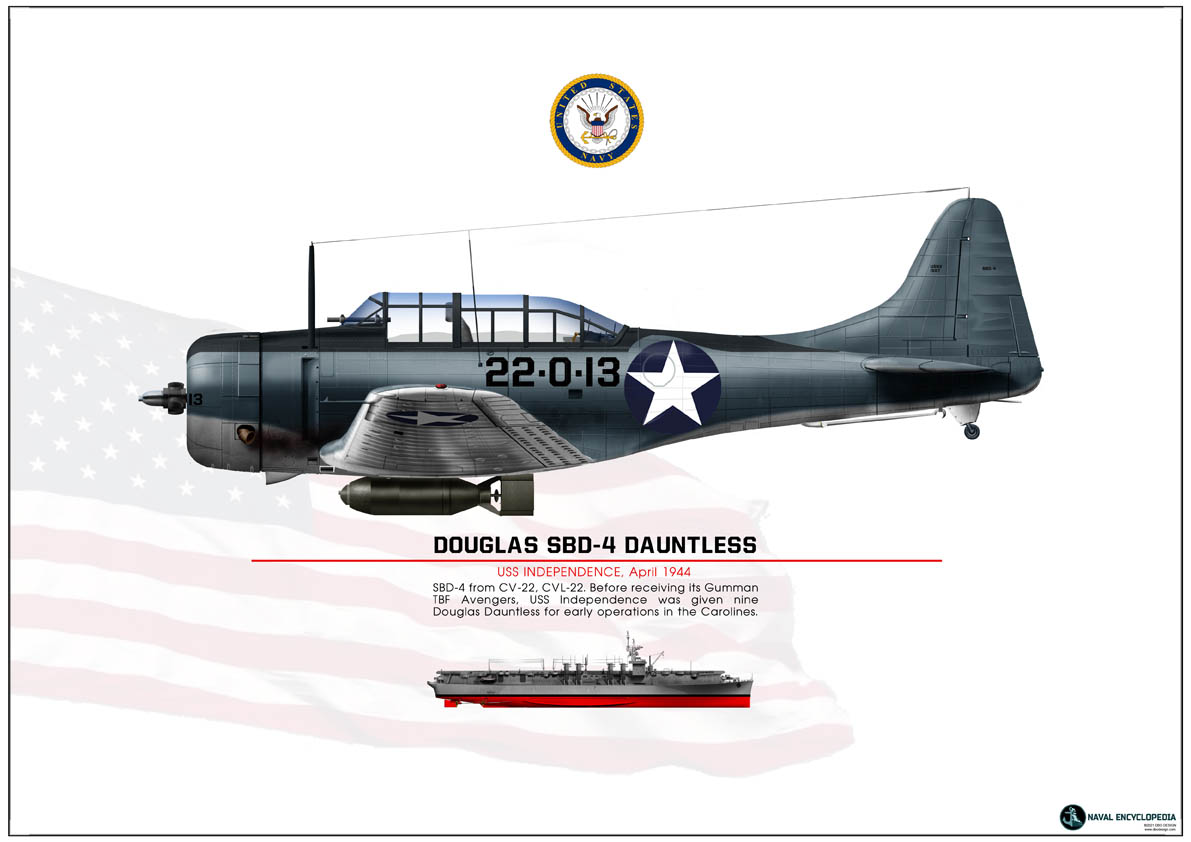
SBD-4 CV22